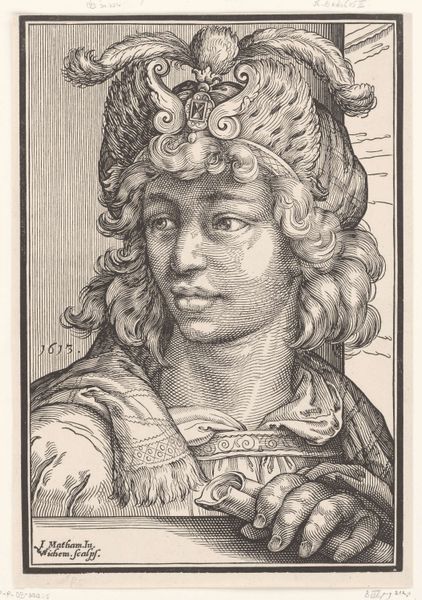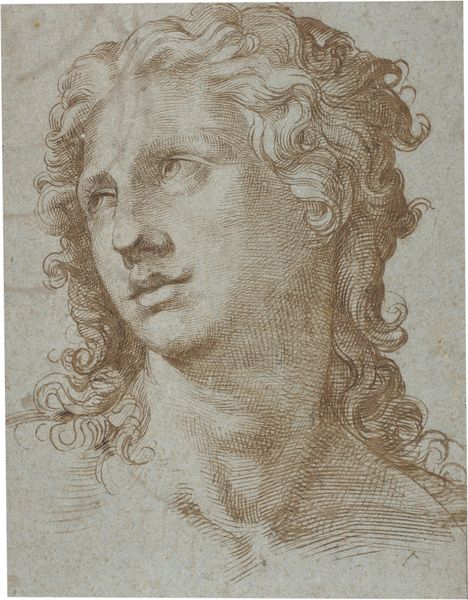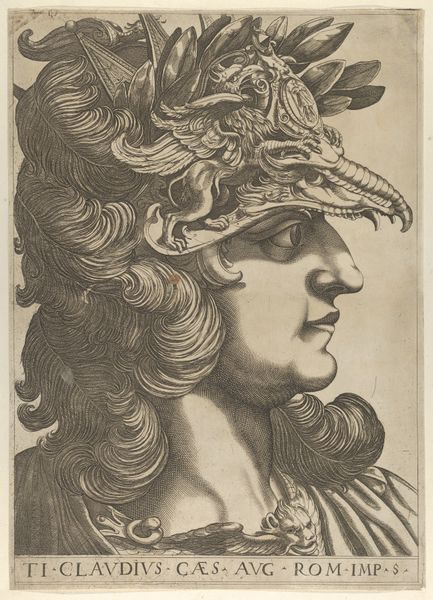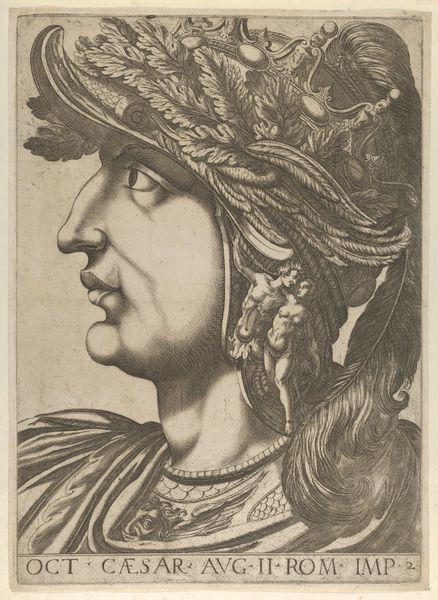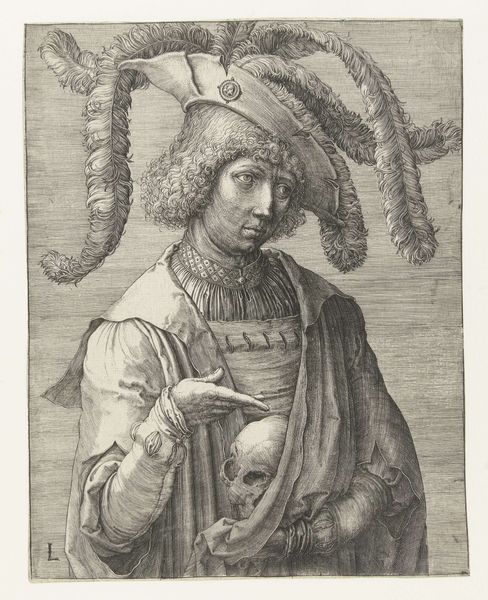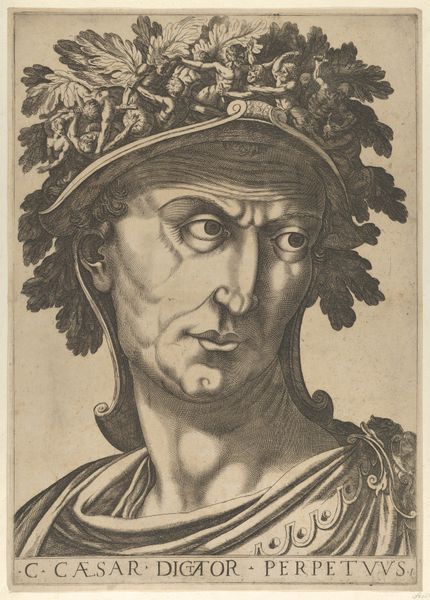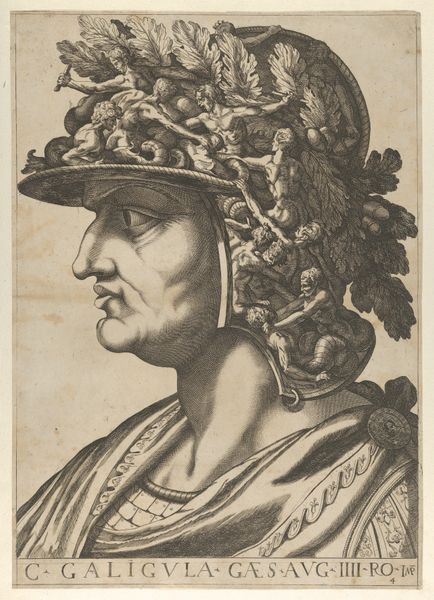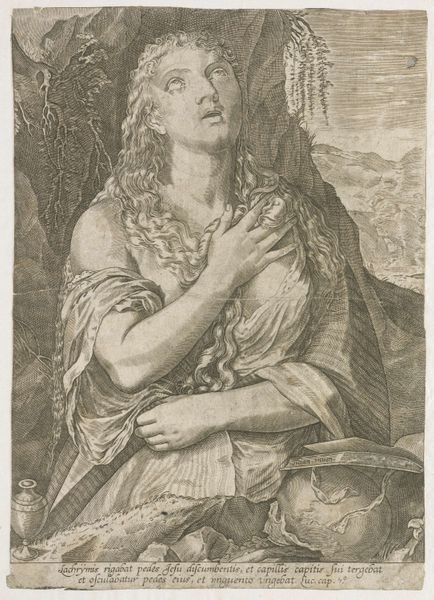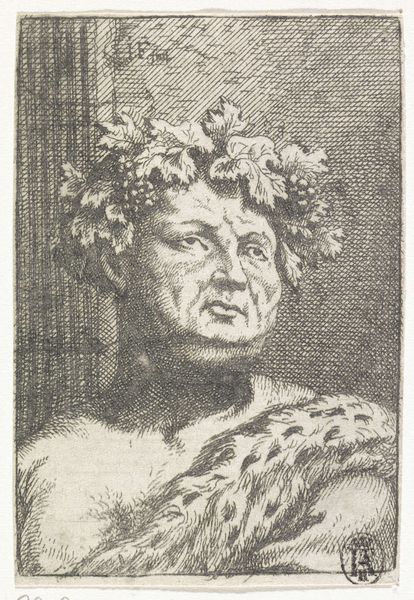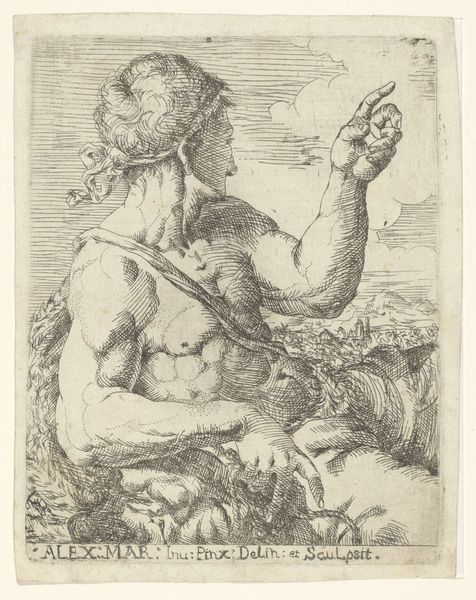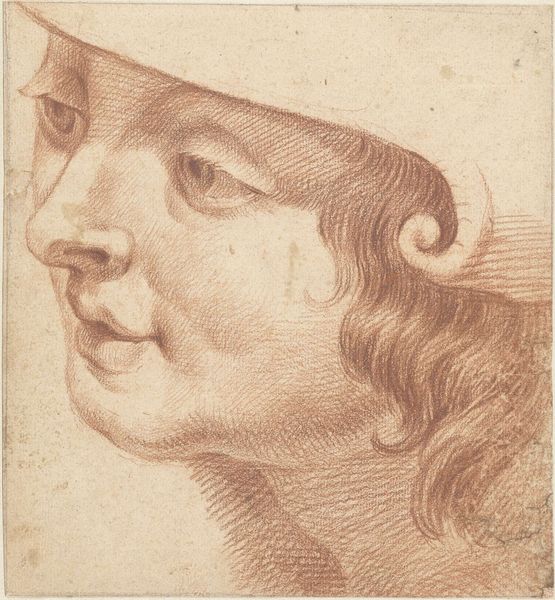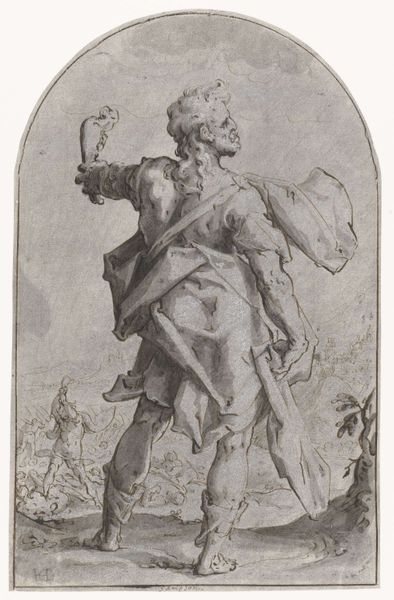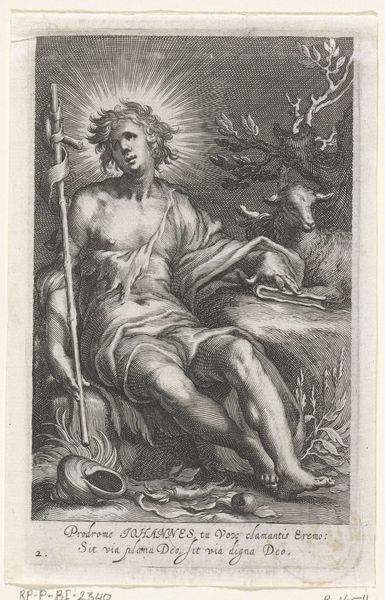
engraving
#
portrait
#
baroque
#
portrait reference
#
animal drawing portrait
#
portrait drawing
#
history-painting
#
facial portrait
#
engraving
#
portrait art
Dimensions: width 314 mm, height 4446 mm
Copyright: Rijks Museum: Open Domain
Editor: Here we have "Mercurius," an engraving made between 1604 and 1634 by Gerrit Gauw. It's quite detailed! The lines create so much texture, especially in the hair and the winged helmet. What strikes you most about its composition? Curator: Formally, the dense network of hatched lines commands immediate attention. Note how Gauw employs varying densities to model form and suggest tonal variations, adhering to the conventions of engraving. The controlled chaos of line becomes the very subject. Editor: So, it's less about *what* is depicted, but *how* it's depicted? Curator: Precisely. Consider the dynamism inherent in the swirling lines around the helmet and hair versus the more regimented lines that define the face. What does that juxtaposition tell us about the artist’s intent in constructing the image? Editor: Perhaps to draw the eye to the face as the subject, while still showcasing the skill used to make the ornamental aspects. Are the inscription and signatures essential elements to its intrinsic qualities, as you would see it? Curator: The inscriptions offer a semantic layer, but are less vital to a formal analysis, which primarily focuses on the internal logic of the artwork itself, namely line, texture, and composition, so not really. However, that interplay shows art is inseparably both, with cultural representation conveyed and perceived through visual rendering. Editor: Interesting. I’ve certainly gained a deeper appreciation for the artistry involved here, especially how Gauw uses line as both a descriptive and expressive tool. Curator: Indeed, reflecting upon this engraving's intrinsic qualities offers fresh perceptions.
Comments
No comments
Be the first to comment and join the conversation on the ultimate creative platform.
